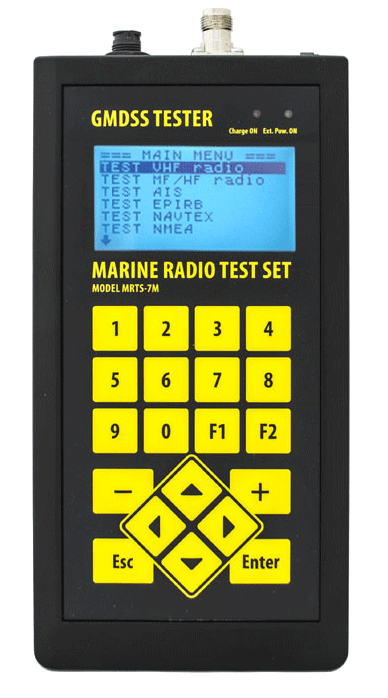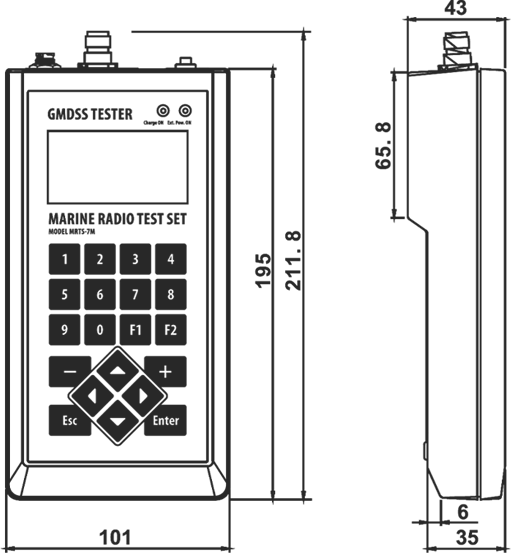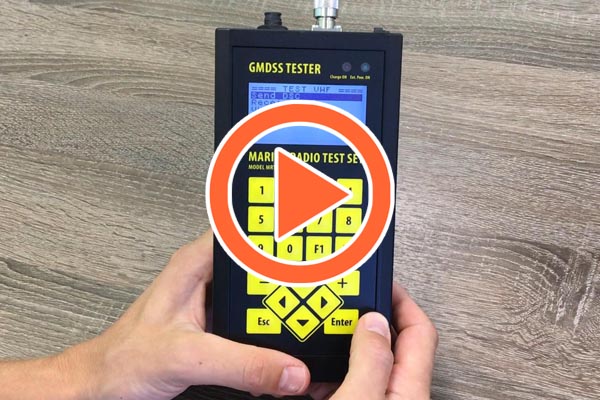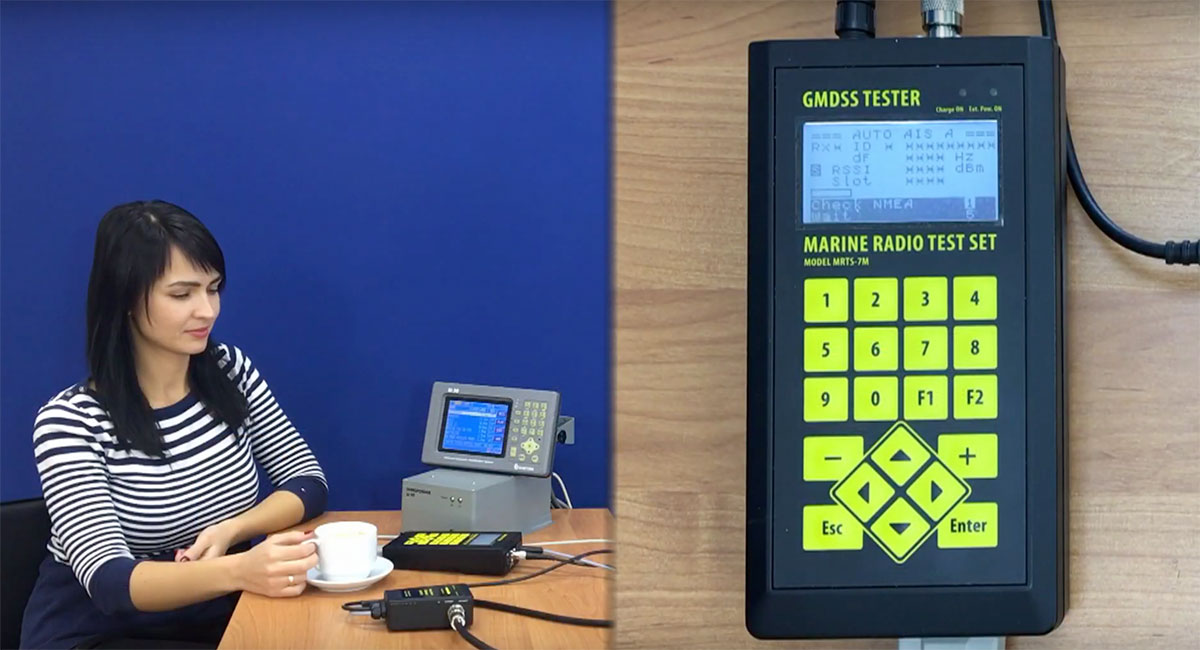GMDSS Test Set for Radio Inspections
GMDSS Multi Tester MRTS-7M is the first handheld multi tester that enables a comprehensive radio survey of all maritime radio equipment in accordance with IMO requirements, such as:
- VHF and MF/HF radios with DSC
- AIS stations
- EPIRBs, including AIS EPIRBs and RLS-enabled beacons
- AIS-SARTs
- 9 GHz SARTs
- NAVTEX
- NBDP (Telex)
































